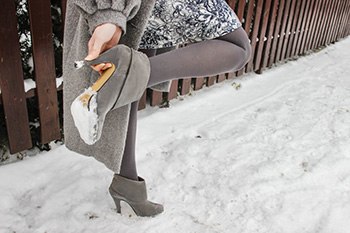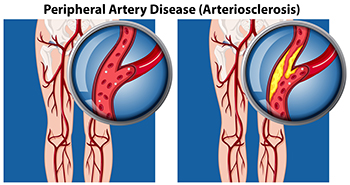

Sever’s disease primarily affects growing children, and it is defined as the aggravation or inflammation of a growth plate in the foot. The most common symptom of Sever’s disease is heel pain. Importantly, recurrence of Sever’s disease is possible. This means that once a child develops Sever’s disease and it goes away, it might come back. There are several steps that a parent might consider taking to help prevent the recurrence of Sever’s disease in their child. Ensuring that your child is wearing proper footwear that provides sufficient support is critical in preventing the recurrence of Sever’s disease. Also, ensuring that the child is not overweight and is maintaining a healthy amount of weight can be important in preventing recurrence. If you have more concerns or questions about dealing with or preventing the recurrence of Sever’s disease in your child, contact a podiatrist today.
Sever's disease often occurs in children and teens. If your child is experiencing foot or ankle pain, see Dale Delaney, DPM from InStride Kinston Podiatry Center. Our doctor can treat your child’s foot and ankle needs.
Sever’s Disease
Sever’s disease is also known as calcaneal apophysitis, which is a medical condition that causes heel pain I none or both feet. The disease is known to affect children between the ages of 8 and 14.
Sever’s disease occurs when part of the child’s heel known as the growth plate (calcaneal epiphysis) is attached to the Achilles tendon. This area can suffer injury when the muscles and tendons of the growing foot do not keep pace with bone growth. Therefore, the constant pain which one experiences at the back of the heel will make the child unable to put any weight on the heel. The child is then forced to walk on their toes.
Symptoms
Acute pain – Pain associated with Sever’s disease is usually felt in the heel when the child engages in physical activity such as walking, jumping and or running.
Highly active – Children who are very active are among the most susceptible in experiencing Sever’s disease, because of the stress and tension placed on their feet.
If you have any questions, please feel free to contact our office located in Kinston, NC . We offer the newest diagnostic and treatment technologies for all your foot and ankle injuries.

Research has indicated that wearing high heels is one of the most common reasons that women develop foot pain. Many women choose to wear high heels, despite knowing unwanted foot conditions may arise and could cause the need for lower heels. A bunion is a bony growth that forms on the side of the big toe which can result from wearing shoes that do not have adequate room for the toes to move freely. High heels often fall into this category and bunions may be prevented by wearing shoes that have more room. Additionally, the calf may become painful which may be a gradual Achilles tendon injury developing. This tendon may become shortened when high heels are frequently worn and relief may be found when the calf muscles are stretched. High heels may cause permanent damage to the feet so it is suggested that you consult with a podiatrist if you would like more information about tips on how to possibly avoid this.
High heels have a history of causing foot and ankle problems. If you have any concerns about your feet or ankles, contact Dale Delaney, DPM from InStride Kinston Podiatry Center. Our doctor can provide the care you need to keep you pain-free and on your feet.
Effects of High Heels on the Feet
High heels are popular shoes among women because of their many styles and societal appeal. Despite this, high heels can still cause many health problems if worn too frequently.
Which Parts of My Body Will Be Affected by High Heels?
What Kinds of Foot Problems Can Develop from Wearing High Heels?
How Can I Still Wear High Heels and Maintain Foot Health?
If you want to wear high heeled shoes, make sure that you are not wearing them every day, as this will help prevent long term physical problems. Try wearing thicker heels as opposed to stilettos to distribute weight more evenly across the feet. Always make sure you are wearing the proper shoes for the right occasion, such as sneakers for exercising. If you walk to work, try carrying your heels with you and changing into them once you arrive at work. Adding inserts to your heels can help cushion your feet and absorb shock. Full foot inserts or metatarsal pads are available.
If you have any questions please feel free to contact our office located in Kinston, NC . We offer the newest diagnostic and treatment technologies for all your foot and ankle needs.

Damage that happens to the peripheral nervous system may be referred to as peripheral neuropathy. This can lead to peripheral artery disease, and the abbreviation for this is PAD. There are various groups of nerves that can be affected by this condition. These are the motor nerves and are used for walking and talking. When information is transmitted from the brain to the body that consists of temperature or slight pain, it falls into the sensory nerve category. Activities that happen naturally such as breathing, and digesting foods are part of the autonomic nerves. Damage can occur to these nerve groups as a result of diabetes, vascular problems, or autoimmune diseases. Additionally, kidney and liver disorders may contribute to developing PAD. Common symptoms can include the inability to feel sensations in the feet, and walking may become difficult. If you have diabetes and have a loss of feeling in your feet, it is strongly urged that you are under the care of a podiatrist who can effectively treat PAD.
Peripheral artery disease can pose a serious risk to your health. It can increase the risk of stroke and heart attack. If you have symptoms of peripheral artery disease, consult with Dale Delaney, DPM from InStride Kinston Podiatry Center. Our doctor will assess your condition and provide you with quality foot and ankle treatment.
Peripheral artery disease (PAD) is when arteries are constricted due to plaque (fatty deposits) build-up. This results in less blood flow to the legs and other extremities. The main cause of PAD is atherosclerosis, in which plaque builds up in the arteries.
Symptoms
Symptoms of PAD include:
It is important to note that a majority of individuals never show any symptoms of PAD.
Diagnosis
While PAD occurs in the legs and arteries, Podiatrists can diagnose PAD. Podiatrists utilize a test called an ankle-brachial index (ABI). An ABI test compares blood pressure in your arm to you ankle to see if any abnormality occurs. Ultrasound and imaging devices may also be used.
Treatment
Fortunately, lifestyle changes such as maintaining a healthy diet, exercising, managing cholesterol and blood sugar levels, and quitting smoking, can all treat PAD. Medications that prevent clots from occurring can be prescribed. Finally, in some cases, surgery may be recommended.
If you have any questions, please feel free to contact our office located in Kinston, NC . We offer the newest diagnostic and treatment technologies for all your foot care needs.

One of the most common side effects many pregnant women complain about is swollen feet. It often starts in the second trimester, and they may start to become uncomfortable as the pregnancy progresses. It is considered to be a normal part of pregnancy and is generally caused by additional fluid and blood the body produces. This is the body’s natural method of providing proper nourishment to the growing fetus, and, as a result, the fluid may pool in the ankles and feet. Many women find it helpful to elevate their feet as often as possible, in addition to soaking their feet in warm water. Research has indicated that it may be beneficial to ensure that there are adequate amounts of potassium included in the daily consumption of food. Additionally, this may significantly contribute to possibly reducing high blood pressure. Drinking plenty of water daily is essential in controlling swollen ankles, and wearing compression socks may help to diminish some of the fluid in the ankles. If swollen ankles are bothersome during your pregnancy, and you would like additional remedies that can help you to find relief, please contact a podiatrist.
Pregnant women with swollen feet can be treated with a variety of different methods that are readily available. For more information about other cures for swollen feet during pregnancy, consult with Dale Delaney, DPM from InStride Kinston Podiatry Center. Our doctor will attend to all of your foot and ankle needs.
What Foot Problems Can Arise During Pregnancy?
One problem that can occur is overpronation, which occurs when the arch of the foot flattens and tends to roll inward. This can cause pain and discomfort in your heels while you’re walking or even just standing up, trying to support your baby.
Another problem is edema, or swelling in the extremities. This often affects the feet during pregnancy but tends to occur in the later stages.
How Can I Keep My Feet Healthy During Pregnancy?
If you have any questions please feel free to contact our office located in Kinston, NC . We offer the newest diagnostic and treatment technologies for all your foot and ankle needs.

It is beneficial for people who have diabetes to take extra precautions where their feet are concerned. This can contribute significantly to reducing the risk of getting a diabetic foot ulcer. This can develop as a result of the inability to feel existing cuts and scrapes on the feet, which is generally caused by neuropathy. It is beneficial for diabetic patients to check the bottom of their feet daily, and this can be successfully done by using a mirror. They may also be checked by a caregiver or family member, if applicable. There are symptoms that are typically noticed in people who have diabetes that can include swollen feet, a burning or achy sensation, and wounds that will not heal. Some patients develop blisters on their feet that they are unaware of, and can easily become infected. It is suggested that all weight is taken off of the foot if there is an existing wound, in addition to seeking immediate care with a podiatrist who can effectively treat and manage diabetes.
Diabetic foot care is important in preventing foot ailments such as ulcers. If you are suffering from diabetes or have any other concerns about your feet, contact Dale Delaney, DPM from InStride Kinston Podiatry Center. Our doctor can provide the care you need to keep you pain-free and on your feet.
Diabetic Foot Care
Diabetes affects millions of people every year. The condition can damage blood vessels in many parts of the body, especially the feet. Because of this, taking care of your feet is essential if you have diabetes, and having a podiatrist help monitor your foot health is highly recommended.
The Importance of Caring for Your Feet
Patients with diabetes should have their doctor monitor their blood levels, as blood sugar levels play such a huge role in diabetic care. Monitoring these levels on a regular basis is highly advised.
It is always best to inform your healthcare professional of any concerns you may have regarding your feet, especially for diabetic patients. Early treatment and routine foot examinations are keys to maintaining proper health, especially because severe complications can arise if proper treatment is not applied.
If you have any questions please feel free to contact our office located in Kinston, NC . We offer the newest diagnostic and treatment technologies for all your foot and ankle needs.